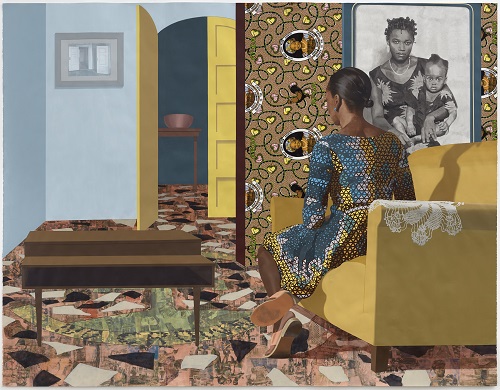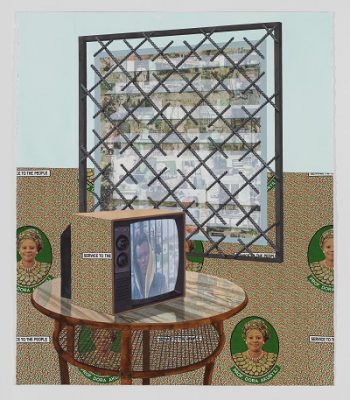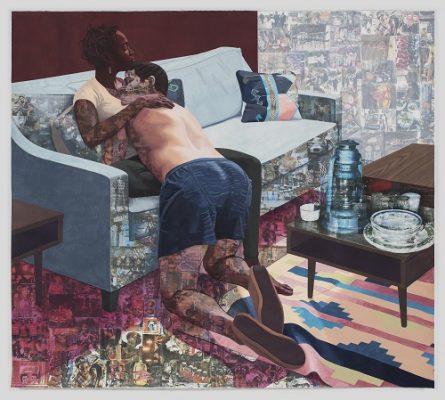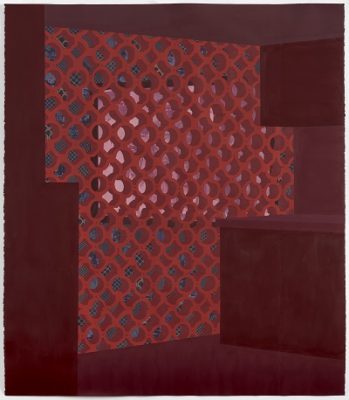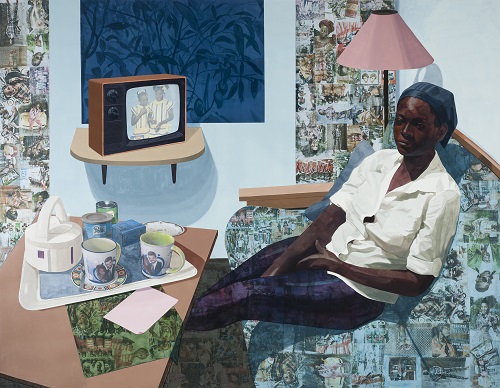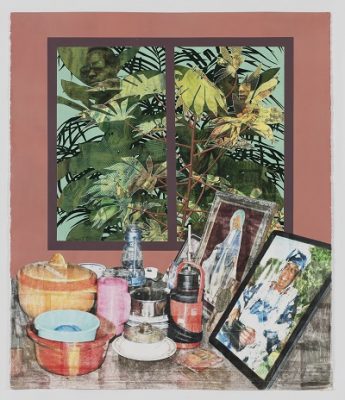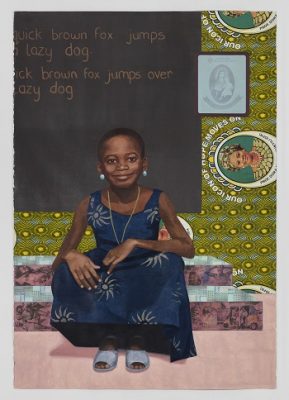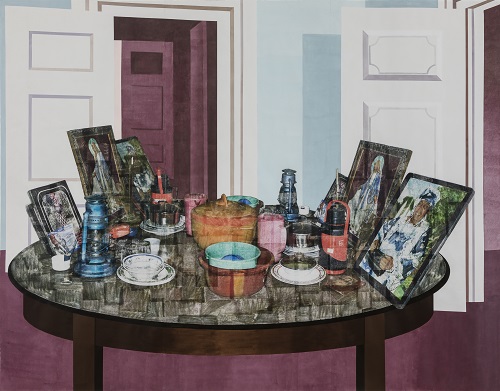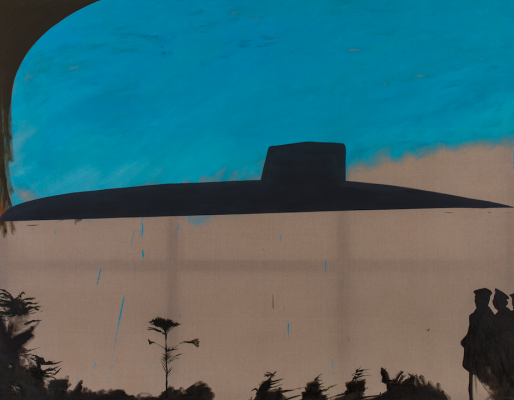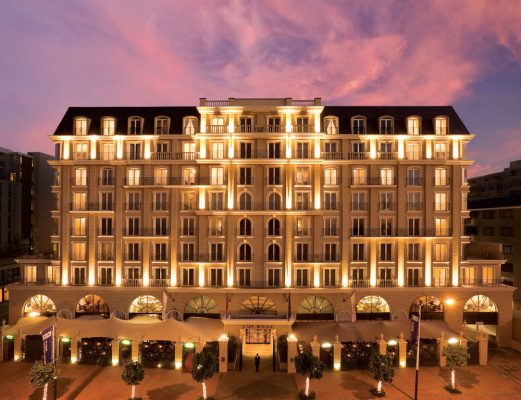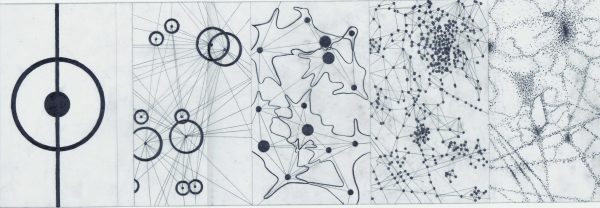Njideka Akunyili Crosby first encountered Mary Louise Pratt’s ‘Arts of the Contact Zone’ (1991), which identifies ‘social spaces where cultures meet, clash and grapple with each other’, during her studies at Yale University School of Art. The ‘contact zone’ has since become an underlying focus in the practice of an artist who left Nigeria in 1999, at the age of 16, to study in the United States, where she now lives with her American husband. Her autobiography is a complex series of contact zones – personal, cultural and political – played out through her compositions.
Akunyili Crosby’s current show at Victoria Miro shares its title with a recent work, Portals (2016), now in the collection of the Whitney Museum of American Art. The artist’s paintings are filled with doors, windows, frames, and screens that exist as openings or intermediaries between two spaces. The concept is also realised in the formal aspects of Akunyili Crosby’s compositions, which are materially dense combinations of painting, drawing and photo-transfer techniques. The artist brings together two cultures, her ‘Americanness’ and ‘Nigerianness’, producing large-scale works of everyday domestic and social scenes that foreground her family, her husband and herself.
My first encounter with Akunyili Crosby was during a talk at Tate Modern, the night before the preview of her show at Victoria Miro. She spoke about her work with a catching enthusiasm, confidently guiding her audience through the many layers of her work projected onto the screen behind her. She flicked back and forth between works, drawing attention to their thematic links. No individual piece, I came to realise, can be considered as separate from the others, but is rather a continuation of a story. That story, which unravelled during my interview with Akunyili Crosby, is beautifully multifaceted and resists confinement, forever coming into contact with other spaces.
